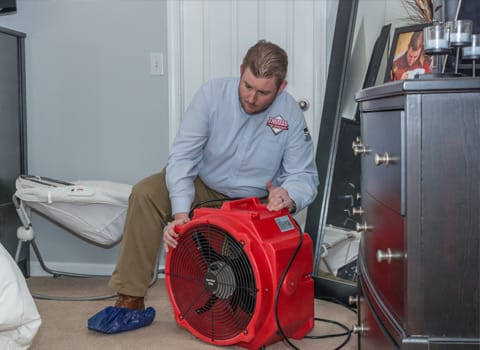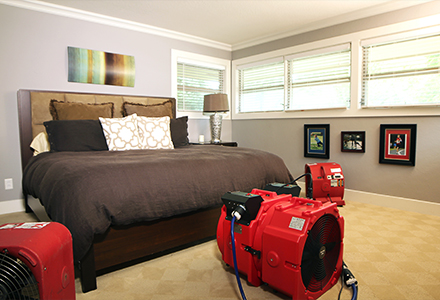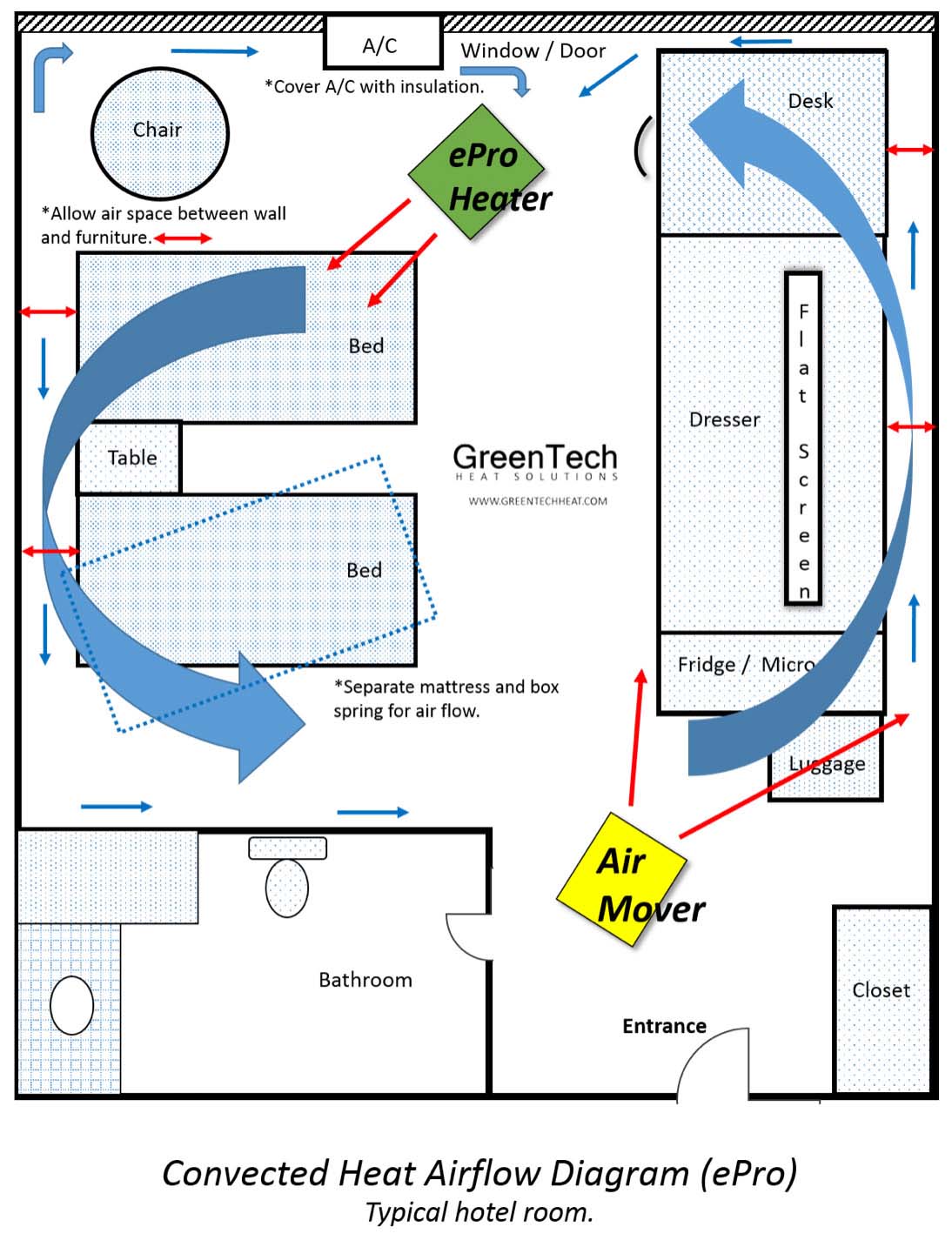To heat treat a room for bed bugs, use a professional pest control service or follow these steps: seal off the room, remove all infested items, wash and dry all clothing and bedding on high heat, steam clean furniture and carpets, and use a bed bug heater or portable heater to raise the room’s temperature above 122°F for a few hours. Bed bugs are persistent pests that can infest your home and cause sleepless nights.
If you are dealing with a bed bug infestation, it’s important to take action immediately to eliminate these pests and prevent them from spreading to other areas of your home. One effective method of getting rid of bed bugs is heat treatment.
We will discuss how to heat treat a room for bed bugs and get rid of these pests once and for all. Whether you choose to hire a professional pest control service or take on the task yourself, these steps will help you successfully heat treat a room for bed bugs and achieve a bug-free home.

Credit: pmpest.co.uk
Identifying The Infestation
Identifying a bed bug infestation is crucial before proceeding with heat treatment.
Recognizing The Signs
- Visible red welts on the skin.
- Small blood stains on sheets.
- Distinct musty odor in the room.
Conducting A Thorough Inspection
- Inspect all furniture and bedding closely.
- Examine cracks and crevices for bugs.
- Use a flashlight to check dark areas.
Preparation For Heat Treatment
Preparation is key when it comes to successfully heat treating a room for bed bugs. Before starting the process, it is important to clear the area of any unnecessary items and belongings to ensure that the heat treatment can be effective. Additionally, sensitive items should be properly protected to avoid any damage. Let’s discuss each step in detail.
Clearing The Area
Before beginning the heat treatment, it is crucial to clear the room of any unnecessary items. Remove all clutter, including clothes, toys, and other objects that may interfere with the heat distribution process. Clearing the area provides ample space for the heat to circulate evenly and reach every corner of the room.
Protecting Sensitive Items
Sensitive items, such as electronics, artwork, and fragile objects, need to be appropriately protected during the heat treatment to prevent any damage. The high temperatures involved can potentially harm these items if not adequately shielded.
To protect sensitive items:
- Remove all electronic devices from the room if possible. If this is not feasible, ensure they are powered off and covered with heat-resistant materials, such as thermal blankets or aluminum foil.
- Place fragile objects, such as glassware or decorative items, in padded containers or wrap them in bubble wrap.
- Take down any artwork or photographs from the walls and cover them with protective sheets.
It is crucial to prioritize the protection of sensitive items to prevent any potential damage during the heat treatment process. By following these steps, you can ensure a successful and effective heat treatment for bed bugs.
Selecting The Right Equipment
When treating a room for bed bugs, the proper selection of equipment is crucial. Choosing a Heater, Considering Temperature Monitoring Devices will ensure effective treatment.
Choosing A Heater
- Opt for electric
heaters for consistent heat. - Select heaters with safety features for peace of mind.
- Ensure the heater covers the room adequately.
Considering Temperature Monitoring Devices
- Use digital thermometers for accurate readings.
- Wireless monitors provide real-time data.
- Consider data loggers for continuous monitoring.

Credit: www.thomaspestservices.com
Executing The Heat Treatment
When executing the heat treatment process, it is important to follow the necessary steps meticulously. The effectiveness of the treatment relies on proper setup and monitoring of the temperature cycles.
Setting Up The Equipment
Begin by placing industrial heaters strategically around the room for uniform heat distribution.
Ensure there are no obstructions blocking the flow of hot air to all areas.
- Position the thermometers in different sections to track temperature levels accurately.
- Verify that the room is sealed tightly to prevent heat from escaping.
Monitoring The Temperature Cycles
Regularly check and record the temperature readings to guarantee a consistent level of heat is maintained throughout.
Utilize wireless temperature sensors for convenience in monitoring remotely.
- Adjust the heat source accordingly to meet the required temperature threshold.
- Continuously monitor and evaluate the temperature cycles to ensure the desired outcome.
Safety Precautions
To effectively heat treat a room for bed bugs, it is important to follow proper safety precautions. These precautions are essential to ensure the safety of both people and pets, as well as to maximize the efficiency of the treatment process.
Ensuring Proper Ventilation
Proper ventilation is crucial when heat treating a room for bed bugs. Before initiating the treatment, ensure that all windows and doors are securely closed to prevent the escape of heat. Additionally, place fans strategically to help circulate the hot air evenly throughout the space. This will prevent localized pockets of intense heat and reduce the risk of fire hazards. Opening interior doors can also help to facilitate better airflow within the room and ensure thorough heat distribution.
Using Thermal Imaging For Safety Checks
Thermal imaging devices can be utilized to conduct safety checks during the heat treatment process. These devices allow the operator to monitor the temperature levels within the room, ensuring that the heat reaches all the necessary areas without creating hot spots or risking damage to sensitive materials. Thermal imaging equipment helps in identifying potential safety hazards and ensures that the treatment process is carried out in a controlled and safe manner.
Post-treatment Actions
After undergoing the heat treatment for bed bugs in your room, it’s essential to take post-treatment actions to ensure the effectiveness of the process. By evaluating the success of the treatment and implementing preventive measures, you can safeguard your space from potential reinfestations.
Evaluating The Success
Post-treatment, inspect your room thoroughly to see if any bed bugs have survived the heat treatment. Look for any signs of bed bugs, such as live bugs, shells, or fecal spots, and consult with a pest control professional if you have any doubts.
Taking Preventive Measures
Implement preventive actions to minimize the risk of future infestations. Consider using mattress encasements, repairing wall cracks, and sealing any potential entry points for bed bugs.
Professional Consultation
Before attempting to heat treat a room for bed bugs, seeking expert advice is crucial. Professional consultation can provide valuable insights into the severity of the infestation and the most effective treatment methods to eradicate bed bugs.
Seeking Expert Advice
For effective bed bug elimination, consult with a pest control professional to assess the situation accurately.
Considering Long-term Treatment Plans
Planning for long-term treatment is essential to prevent future bed bug recurrences. Discuss this with the expert pest control practitioner.

Credit: www.peerlessrestoration.com
Sustaining A Bed Bug-free Environment
To sustain a bed bug-free environment, heat treatment is an effective method. By raising the room temperature to levels lethal to bed bugs, heat treatment eradicates the infestation without using chemicals. This process penetrates deep into the furnishings and crevices, effectively eliminating bed bugs at all stages of development.
Regular Monitoring
To sustain a bed bug-free environment, regular monitoring is essential. Bed bugs are sneaky creatures that can hide in the smallest cracks and crevices, making it challenging to spot them. By regularly inspecting your room for signs of bed bugs, you can catch an infestation before it becomes a full-blown problem.
Here are a few ways you can effectively monitor for bed bugs:
- Inspect your bedding, including the mattress, sheets, and pillows, for any signs of bed bug activity. Look for tiny reddish-brown spots or small dark stains, as these could indicate bed bug droppings or blood stains.
- Check the seams and edges of your mattress for any signs of bed bugs or their eggs. These pests are known to hide in these areas.
- Use a flashlight to thoroughly examine your room, paying close attention to areas where bed bugs are likely to hide, such as furniture, electrical outlets, and baseboards.
- If you suspect bed bugs but cannot find any visible signs, you can set up bed bug traps around your bed or furniture legs. These traps are designed to attract and capture bed bugs, providing an early warning of their presence.
By regularly monitoring your room for bed bugs, you increase the chances of detecting an infestation early on, allowing you to take swift action before it spreads.
Implementing Integrated Pest Management
Implementing Integrated Pest Management (IPM) strategies is crucial for sustaining a bed bug-free environment. IPM involves a multifaceted approach that focuses on prevention, monitoring, and control.
Here are some key elements of IPM for bed bug management:
- Declutter your room and eliminate any unnecessary items, as bed bugs thrive in cluttered environments.
- Seal cracks and crevices in walls, baseboards, and furniture to reduce potential hiding spots for bed bugs.
- Repair any leaks or water sources that may attract bed bugs, as these pests can survive for months without feeding.
- Vacuum regularly, paying special attention to areas where bed bugs may hide, such as furniture seams, mattress edges, and carpet edges.
- Wash and dry your bedding on high heat to kill any bed bugs or eggs present.
- Consider using bed bug-proof mattress and pillow encasements to prevent bed bugs from infesting these items.
- If an infestation is detected, consult a professional pest control company to determine the most effective treatment options.
Implementing these IPM strategies can significantly reduce the risk of bed bug infestations and help sustain a bed bug-free environment over the long term.
Frequently Asked Questions On How To Heat Treat A Room For Bed Bugs?
What Are The Signs Of Bed Bugs Infestation?
Bed bugs leave behind bloodstains on sheets and mattresses, shed skins, and a musty odor in the room.
How Can Heat Treatment Effectively Eliminate Bed Bugs?
Heat treatment involves raising the room temperature to 120-140°F, which kills bed bugs at all life stages.
Is Heat Treatment A Safe And Eco-friendly Method?
Yes, heat treatment is safe for humans and pets, as it does not involve harmful chemicals and is environmentally friendly.
Conclusion
To sum up, heat treatment is a highly effective method for eradicating bed bugs. By raising the temperature to lethal levels, you can eliminate bed bugs in all stages of development. It’s a non-toxic and eco-friendly approach that offers long-lasting results.
Consider heat treatment as a safe and efficient option for eliminating bed bugs from your living space.
Related posts:

I’m MD Tanvir, and I bring years of expertise gained from working closely with pest control companies to the forefront. My journey in the industry has inspired me to launch Bug Battler, a platform aimed at equipping people with the know-how to combat pests autonomously. Through Bug Battler, I aim to empower individuals with practical insights to tackle pest infestations effectively.

